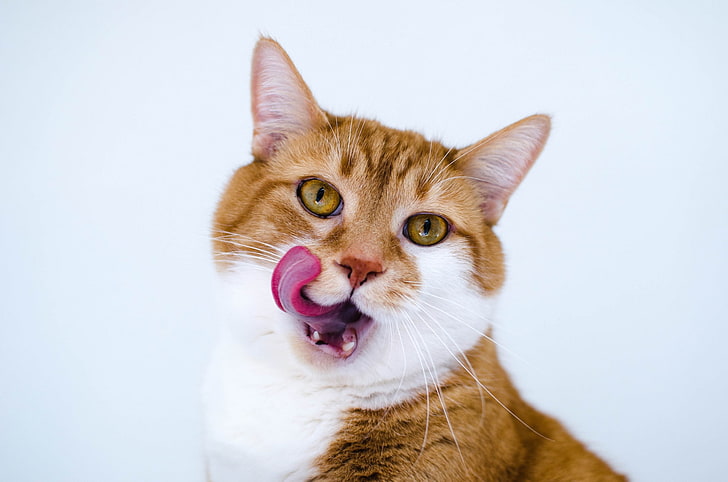
Cats are known for their meticulous nature, a trait that endears them to millions of Americans who welcome them into their homes. One of the most common ways they express this fastidiousness is through grooming, an activity that occupies a significant portion of their day. It’s not uncommon to witness a cat showing affection by licking their human companions, a behavior often referred to as a “Cat Lick.” This act of licking can be a sign of bonding, comfort, or even marking their human with their scent.
Whether gracefully lounging on a sofa, perched by the window watching birds, or stretching in a sunny spot, cats seamlessly integrate grooming into their daily routine, turning it into an art form. They use their tongues to clean their fur, regulate body temperature, and even soothe themselves when feeling stressed. However, while licking is a natural and necessary behavior for felines, excessive licking and overgrooming can indicate underlying issues that require attention.
While cats naturally groom themselves to maintain hygiene and comfort, obsessive or excessive licking, especially when it extends to non-body, non-food items like blankets, furniture, or even their human’s clothing, could signal an underlying medical or psychological concern. This behavior may be a sign of a metabolic or physiological disorder, obsessive-compulsive disorder, or stress resulting from changes in their household environment, such as the introduction of a new pet, a move to a new home, or changes in their routine.
Additionally, certain skin conditions, allergies, or parasites can also contribute to excessive licking, leading to potential hair loss, skin irritation, or infection. If you notice your cat engaging in persistent licking beyond normal grooming habits, it is crucial to seek prompt attention from a veterinary professional. A veterinarian can help identify the root cause of the behavior and provide appropriate treatment, whether it be medical intervention, environmental enrichment, or stress-reduction strategies. Understanding your cat’s licking habits and responding accordingly can ensure their well-being and strengthen the bond between you and your feline companion.

Why Does Your Cat Engage in Non-Stop Self-Grooming?
Some cats engage in non-stop self-grooming, a behavior often linked to conditions like psychogenic alopecia. This condition, prevalent among female cats and certain breeds, serves as a coping mechanism for dealing with stressors in their environment. Understanding the triggers behind this behavior is key to providing effective support and treatment.
Why Does Your Cat Have a Habit of Licking Nonfood Items?
Cats exhibiting compulsive licking of nonfood items may be experiencing pica, a condition usually associated with metabolic or physiological disorders. Addressing dietary needs and conducting screenings for underlying health issues are essential steps in managing this behavior and ensuring the cat’s overall health and well-being.
What Initiates Obsessive-Compulsive Disorder in Your Cat?
Similar to humans, cats can develop obsessive-compulsive disorder, characterized by repetitive behaviors influenced by genetic predispositions or environmental stressors. Collaborating with a veterinarian to implement stress-reduction techniques and potential pharmacological interventions can help manage and alleviate these symptoms.
What Are the Medical Factors Behind Cat Licking Behavior?
Excessive licking in cats may also be indicative of various medical conditions, including pain, skin irritations, or parasitic infestations. Conducting a comprehensive medical examination enables veterinarians to pinpoint the underlying cause and devise appropriate treatment plans tailored to the cat’s needs.
What Can You Do? Treatment Options for Cats
- Keep litter boxes clean and maintain a consistent routine to minimize stressors in your cat’s environment.
- Provide your cat with toys for playtime, especially when you’re not around, to keep them engaged and mentally stimulated.
- Create safe havens where your cat can retreat for peace and quiet, away from other pets and family members.
- If your cat is diagnosed with obsessive-compulsive disorder, consider consulting an animal behavioral therapist to address the underlying causes of excessive licking.
- In severe cases, your veterinarian may prescribe anti-anxiety medications like selective serotonin reuptake inhibitors (SSRIs). However, there are also alternative treatment options available, so discuss them with your vet.
- Schedule regular veterinary checkups to monitor your cat’s overall mental and physical health and ensure timely intervention if needed.
As responsible pet owners, it’s essential to monitor our cat’s licking habits and seek veterinary guidance when necessary. By understanding the underlying causes and implementing appropriate interventions, we can ensure our feline companions lead fulfilling and healthy lives.


